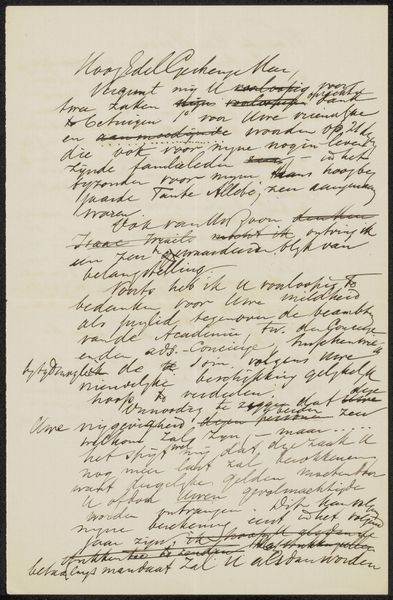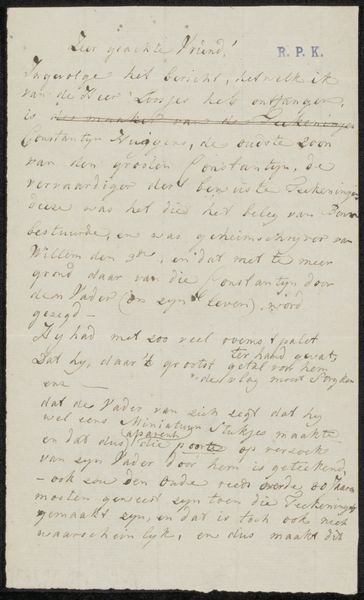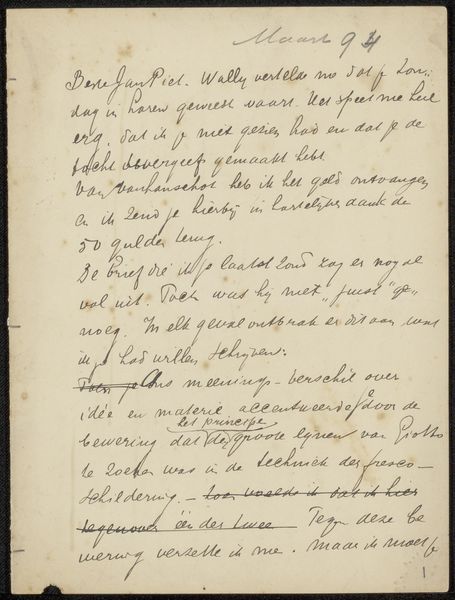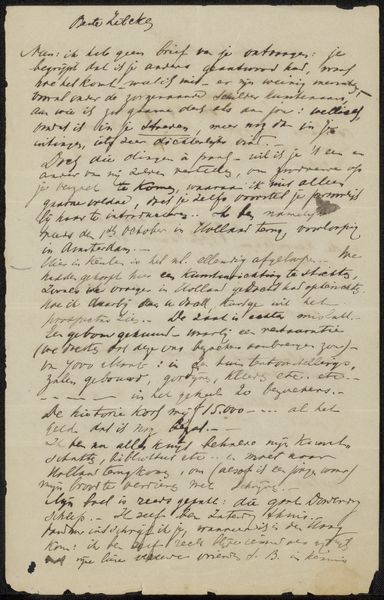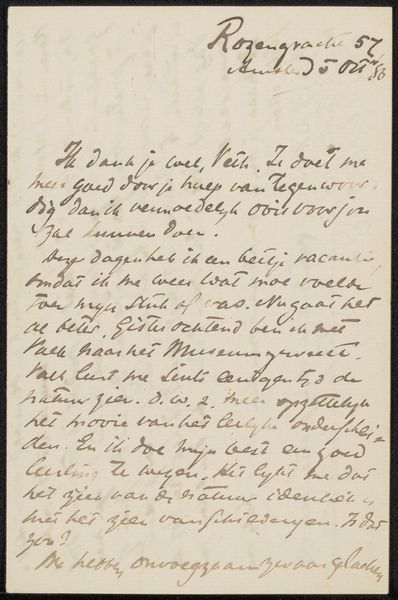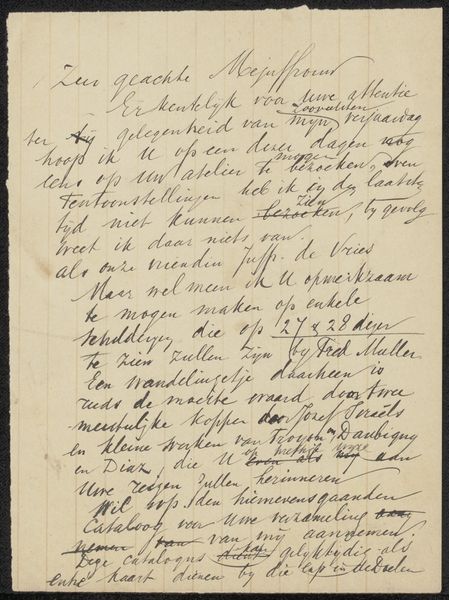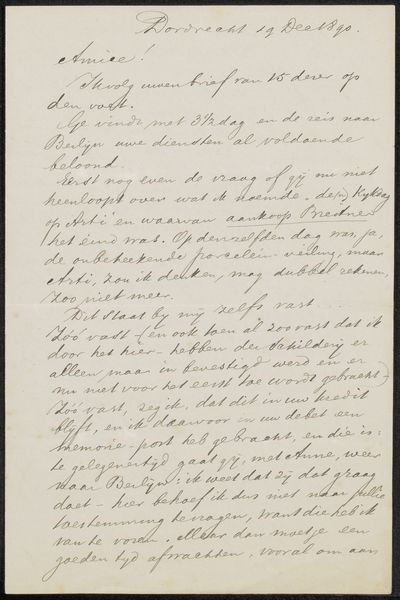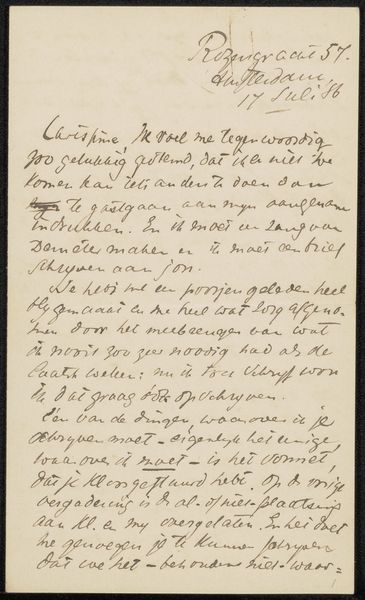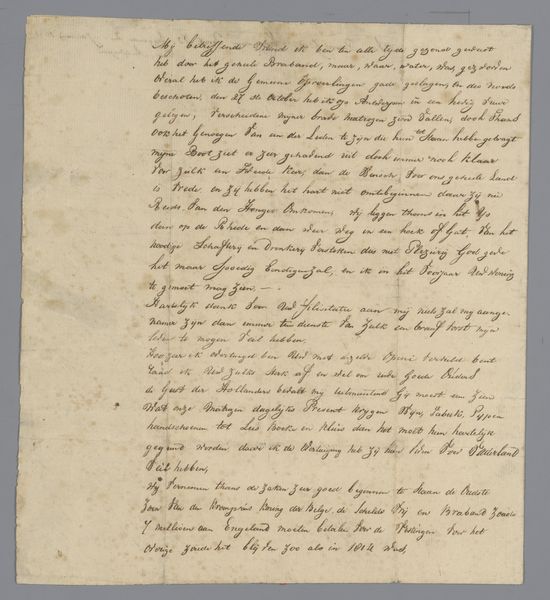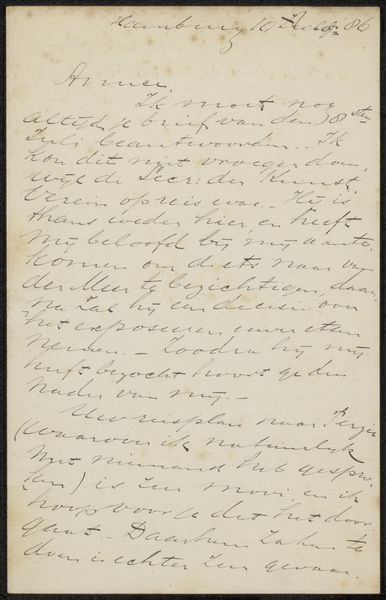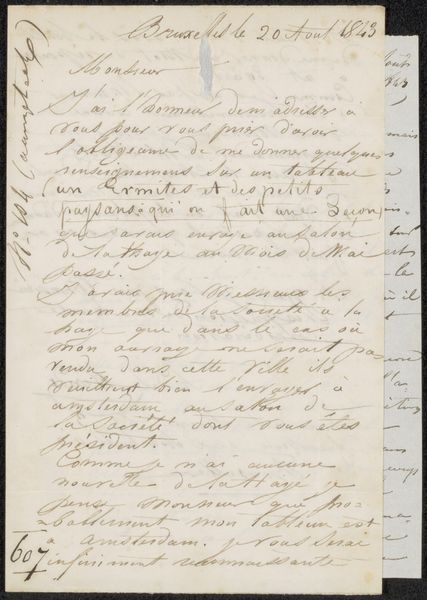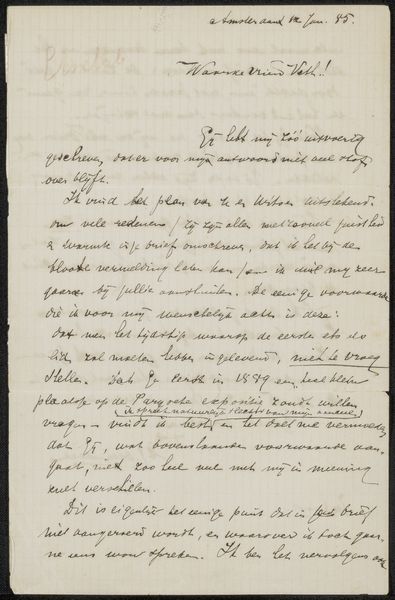
Een Oranje-Snuyfje / Verkooping bij Ecxecutie, van de Regie Tabak 1813
0:00
0:00
vincentloosjes
Rijksmuseum
drawing, print, textile, paper, ink
#
drawing
#
aged paper
#
homemade paper
#
hand-lettering
# print
#
hand drawn type
#
textile
#
paper
#
personal sketchbook
#
ink
#
fading type
#
romanticism
#
sketchbook drawing
#
watercolour bleed
#
sketchbook art
#
watercolor
#
calligraphy
Dimensions: height 40 cm, width 15.8 cm
Copyright: Rijks Museum: Open Domain
Curator: This is “Een Oranje-Snuyfje / Verkooping bij Ecxecutie, van de Regie Tabak” from 1813, created by Vincent Loosjes. It’s an ink and watercolor drawing on paper. It feels very fragile, almost like a historical document. How would you approach an interpretation? Editor: Well, initially I'm drawn to the script itself. The handwritten text has such an antiquated feel; how does its form influence our understanding of the message? Curator: Precisely! We must consider the visual presentation as integral to its meaning. The calligraphic style, the variations in line weight, the very texture of the aged paper... all of these elements contribute to the work's formal qualities. Are they decorative? Do they reinforce a particular social class through writing style? What does this script tell us about the intended audience? Editor: I see your point! It's not just *what* it says, but *how* it's said that carries meaning. Are the capitalization and letterforms important? Curator: Undeniably. Note the generous flourishes, the way certain words are emphasized through size and placement. Think about semiotics – the study of signs and symbols. Each stroke of the pen, each carefully chosen letterform, acts as a signifier, contributing to the overall signified meaning of the artwork. Look also at the hand lettering—does it emulate popular contemporary typefaces or does it signal local trends? What effect does this have on a potential reader? Editor: So, even without fully understanding the Dutch text, we can glean insights from the visual construction of the piece. It really highlights how the material and formal aspects are part of the overall aesthetic value. Curator: Indeed. By attending to these elements, we move beyond a superficial reading and begin to appreciate the complexities embedded within the work. Consider also the print and the way this type of art interacts with drawing—formally this presents all types of interesting dynamics!
Comments
No comments
Be the first to comment and join the conversation on the ultimate creative platform.

